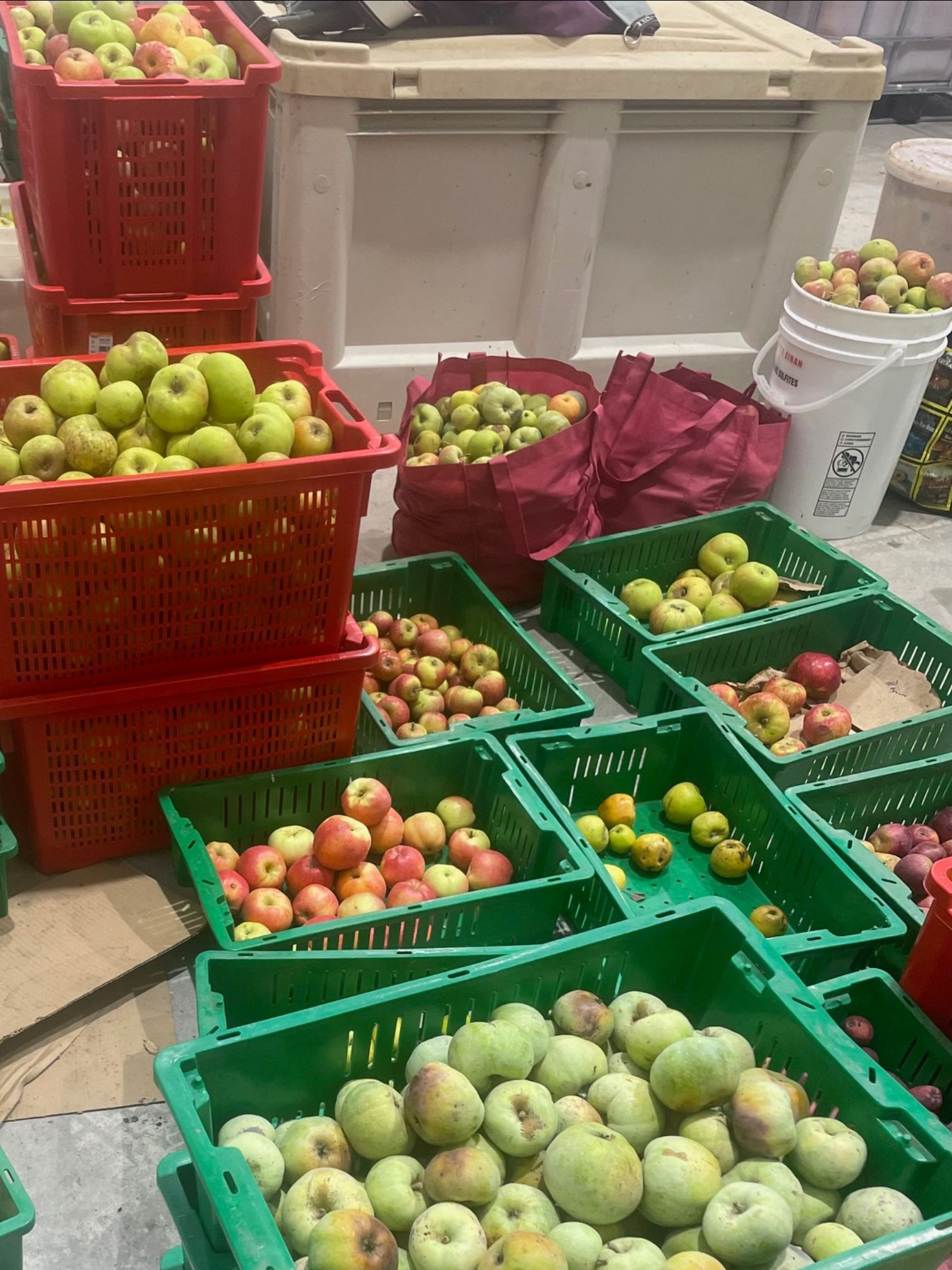Harvest Update
It’s been a hectic but productive harvest for us. This has been been our first harvest in our new facility and has been tiring but successful. Harvest in Sonoma County has been much later than normal and we’re seeing 3-4 weeks later than typical dates. We started our harvest back in late-August and are now more than 3/4 complete.
A big but unplanned change is that this year we transitioned to mostly doing our own juicing. We can bring in smaller lots of apples and have more control of the process. Since this was a last moment decision we don’t have much automation in place yet— it’s been a great workout.
The other big news is that its the first year we’ve let our estate orchard set a crop. Our goal is to be able to get a full barrel of brandy entirely from our orchard, it’ll be close but I think we can do it. This year’s plan includes 5 tons from our estate orchard and bringing in 10 tons of Bartletts, 12 tons of Gravensteins, and 20 tons of cider apples from Sebastopol growers. We’re about 3/4 of the way through harvest and can see the light at the end of the tunnel. Tomorrow we’re pressing 5 tons of our neighbors grapes, next week we’ll do another 5 tons of apples…feeling like we’ll make it to the finish line!
Pressing Matters Chapter 1
This year we invested in a 900 Liter basket press. This is the classic style press that whose design is timeless. Just put your ground apples into a large basket and press down hard to get the juice out. In our case the hard press is done with a hydraulic cylinder that can exert up to 175 atmospheres (aka bar) of pressure – equivalent to the pressure 1/2 mile deep in the ocean. An important parameter when pressing is how quickly you apply the pressure. Apply pressure too slowly and you’ll have a very long day. Apply pressure too quickly and you’ll lose efficiency as juice is trapped inside the mass of apple pomace and you’ll also create a large mess as pulp will squeeze through the openings of the press and go everywhere. Our press is able to sense the pressure, which is great. It is also able to go to a set pressure which is also great. Unfortunately it doesn’t let us enter a ramp profile which is less than great. This means that standard operation involves standing in front of the press and slowly ramping the pressure up form the initial pressing pressure of ~15 bar up to the ultimate pressure of 175 bar over the course of an hour. Like we did with our Aging Cave in the last newsletter we wanted to automate this. To do so we attached a $20 Arduino controller to our press. This controller can measure the pressure and we can now control it. We have a lot to learn but wanted to share our early learnings. Here is one of our recent pressings as controlled and measured by our controller.

Our program is simple – we go to a set pressure and then stop the motor. As juice drains from the press the pressure slowly decreases. We allow it to decrease by 5 bar and then turn the motor back on and go to a slightly higher pressure. Each time compressing the pomace a little bit more to get more juice out. What is interesting is that for the first 40 minutes the pressing is nice and steady. But then the press starts to accelerate as we were applying force too quickly. To solve this we inserted a 10 minute delay which was enough to slow things back down. To examine this more closely we look at the time it takes for the juice to flow out of the press to initiate the next increase in force.

What we discovered is that at first it takes 30 seconds for juice to flow out of the press each time we apply more force. This time slowly increases to 60 seconds as there is less juice to come out. To help speed the process up we started to apply force more quickly. At first this worked well but after 45 minutes we were applying force more quickly than the juice can escape. As a result of these high forces and trapped juice, pomace was squishing out of the press. To solve this we applied a 10 minute pause and let things settle back down with great results. We have a great deal to learn and refine but this small and simple controller has saved hours of standing around pressing buttons on our press and given us tools to optimize pressing of our apples.

